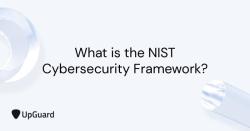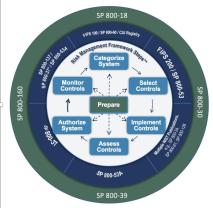What is NIST SP 800-128 under security impact analysis (CNSSI 4009-adapted)?
NIST SP 800-128, titled "Guide for Security-Focused Configuration Management of Information Systems," provides guidance on implementing security-focused configuration management (CM) of information systems. This document is adapted from CNSSI (Committee on National Security Systems Instruction) 4009, which is a guide for security configuration management.
Here's an exploration of the key concepts and principles covered in NIST SP 800-128:
Security-Focused Configuration Management (CM):
- The primary goal of this document is to guide organizations in implementing CM practices that focus on enhancing the security of information systems.
Configuration Management Process:
- NIST SP 800-128 outlines a systematic process for managing the configurations of information systems. This process includes planning, identification, control, status accounting, and auditing.
Security Impact Analysis:
- Security Impact Analysis is a critical component of the CM process. It involves evaluating proposed changes to system configurations to assess their potential impact on security.
Configuration Baselines:
- Establishing and maintaining configuration baselines is essential. A baseline represents a known and stable configuration of an information system, against which proposed changes are compared.
Change Control Process:
- The document emphasizes the importance of a structured change control process. This process ensures that changes to system configurations are documented, assessed for security impact, approved, and implemented in a controlled manner.
Security Policies and Guidelines:
- Organizations are encouraged to develop and implement security policies and guidelines that support security-focused CM. These policies should align with the organization's overall security objectives.
Monitoring and Auditing:
- Continuous monitoring and auditing of system configurations are essential to maintaining security. Organizations should use automated tools and manual reviews to ensure that configurations remain compliant with security requirements.
Documentation:
- Detailed documentation of system configurations, changes, and security assessments is crucial. This documentation serves as a reference for security impact analyses and audits.
Security Controls:
- The document emphasizes that security controls should be integrated into the CM process. This includes the application of security configurations, patches, and updates.
Vulnerability Management:
- Organizations should actively manage vulnerabilities in their systems and apply patches and updates promptly to address security weaknesses.
Security Training and Awareness:
- Employees and system administrators should receive training and awareness programs to ensure they understand the importance of security-focused CM and their roles in maintaining secure configurations.
Compliance and Reporting:
- Organizations should establish mechanisms for compliance checking and reporting to ensure that configurations align with security requirements and standards.
NIST SP 800-128 provides valuable guidance for organizations to enhance the security of their information systems by implementing security-focused CM practices. By systematically managing and monitoring configurations, organizations can reduce security risks and vulnerabilities, improve incident response, and maintain a more resilient cybersecurity posture.









